Electro Harmonix Nano Q-Tron Handleiding
Electro Harmonix
Niet gecategoriseerd
Nano Q-Tron
Bekijk gratis de handleiding van Electro Harmonix Nano Q-Tron (4 pagina’s), behorend tot de categorie Niet gecategoriseerd. Deze gids werd als nuttig beoordeeld door 19 mensen en kreeg gemiddeld 4.9 sterren uit 10 reviews. Heb je een vraag over Electro Harmonix Nano Q-Tron of wil je andere gebruikers van dit product iets vragen? Stel een vraag
Pagina 1/4

Congratulations on your purchase of the Nano Q-Tron envelope-controlled
lter! An envelope-controlled lter modulates an instrument’s tone based
on the musician’s dynamics and playing style. The loudness of your instru-
ment’s signal forms a volume envelope that directly sweeps the cutoff or
center frequency of the lter. In the Nano Q-Tron, three different lter
types are available: Lowpass, Bandpass and Highpass, all controllable with
variable Q and sensitivity knobs; yielding a wide range of tonal options.
Nano Envelope Filter
Operating Instructions
Connect your guitar to the INPUT jack on the Nano Q-Tron and the AMP
jack to your amp’s input. Apply power if needed; your Nano Q-Tron might
already have a 9V battery installed. Press the footswitch to ensure the
STATUS LED is lit, now your Nano Q-Tron is ready to go.
The Nano Q-Tron’s effect is controlled by the musician’s playing dynamics.
A stronger attack or louder note will yield a more dramatic effect, while
softer playing will produce more subtle effects. Use the full range of control
settings in combination with different playing techniques to obtain several
different and unique effects combinations.
TIP: You might nd that the DRIVE and Q controls work best when they are
in the middle of their range rather than maximized.
TIP: When you play a note into the Nano Q-Tron, its lter jumps up to a
high frequency and then the frequency slowly descends according to the
volume envelope of the notes you play. The louder your note, the higher
in frequency the lter jumps.

Controls and Connections
1. DRIVE Knob Sets the envelope sensitivity gain, which in turn controls
how wide the lter sweeps. The higher the DRIVE setting, the more the
lter reacts to your playing and the higher in frequency the lter will jump
when you play a note. Turn DRIVE clockwise for a wider lter sweep or
counterclockwise to reduce the sweep range. If you turn DRIVE up too far,
the lter sweep will max out at its highest frequency (approximately 3.5kHz)
and remain at the highest frequency until the note has fully decayed.
Louder instruments will typically use lower DRIVE settings while quieter
instruments require higher settings. When learning the Nano Q-Tron,
start with DRIVE at 12 o’clock.
- 2 -

- 3 -
2. MODE Rotary Switch (LP / BP / HP) Determines the frequency range
that the lter allows to pass through. LP (Lowpass) mode emphasizes low
frequencies, BP (Bandpass) middle frequencies and HP (Highpass) high
frequencies.
3. Q Knob Sets the bandwidth of the lter. As Q is turned clockwise, the
lter sounds more resonant or peakier, making the envelope effect more
dramatic. Low settings of Q yield a less intense lter curve. Start with Q
set to about 2 o’clock for a middle-of-the-road lter intensity.
4. VOL Knob Adjusts the overall volume at the OUTPUT jack. As VOL is
turned clockwise, the output level increases. Use VOL to match the effect
volume to your bypass volume or give the effect a volume boost.
5. FOOTSWITCH and STATUS LED The footswitch engages or bypasses the
effect. The Status LED lights when the effect is engaged. The LED is off in
bypass mode. The Nano Q-Tron employs True Bypass.
6. INPUT Jack Audio input to the Nano Q-Tron.
7. AMP Jack Audio output from the Nano Q-Tron. In bypass mode, the AMP
jack is directly connected to the INPUT jack.
8. 9V Power Jack An optional 9VDC, center-negative power supply can be
connected to the power jack to provide power without a battery. The Nano
Q-Tron requires 10mA at 9VDC on a center-negative plug. Do not exceed
12VDC at the power jack.
When using a 9V battery, plugging into the INPUT jack activates power.
The input cable should be removed when the unit is not in use to avoid
running down the battery.
To change the 9-volt battery, you must remove the 4 screws on the bottom
of the Nano Q-Tron. Once the screws are removed, you can take off the
bottom plate and change the battery. Please do not touch the circuit board
or adjust the trim pot while the bottom plate is off or you may damage a
component or set the lter sweep range to a non-ideal setting.
Notes and Specications
t Audio input impedance at INPUT jack: 330kΩ
t Audio output impedance at OUTPUT jack: 300Ω
t Current draw: 10mA
t Maximum input signal level: +5.2dBu
Product specificaties
| Merk: | Electro Harmonix |
| Categorie: | Niet gecategoriseerd |
| Model: | Nano Q-Tron |
Heb je hulp nodig?
Als je hulp nodig hebt met Electro Harmonix Nano Q-Tron stel dan hieronder een vraag en andere gebruikers zullen je antwoorden
Handleiding Niet gecategoriseerd Electro Harmonix
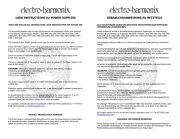
5 Augustus 2025
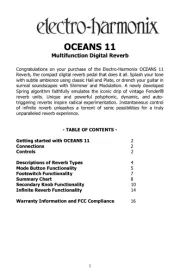
5 Augustus 2025
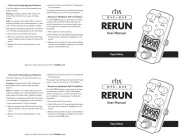
5 Augustus 2025
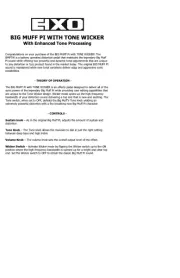
5 Augustus 2025
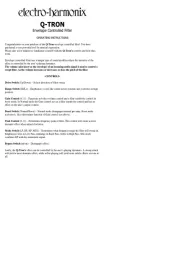
5 Augustus 2025
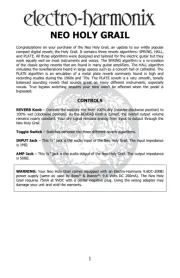
4 Augustus 2025
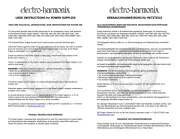
4 Augustus 2025
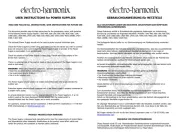
4 Augustus 2025
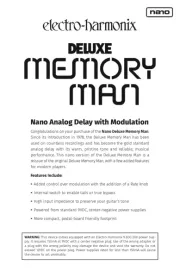
4 Augustus 2025
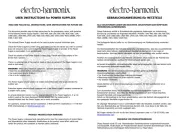
4 Augustus 2025
Handleiding Niet gecategoriseerd
- Spring
- Vicks
- Fiilex
- BabyHome
- Nils Extreme
- Pawa
- Grandstream
- Star Belly
- Phanteks
- Pro-Lift
- Heller
- Cypress
- Palmako
- Eurospec
- Nyko
Nieuwste handleidingen voor Niet gecategoriseerd

14 September 2025

14 September 2025

13 September 2025

13 September 2025

13 September 2025

13 September 2025

13 September 2025

13 September 2025

13 September 2025

13 September 2025